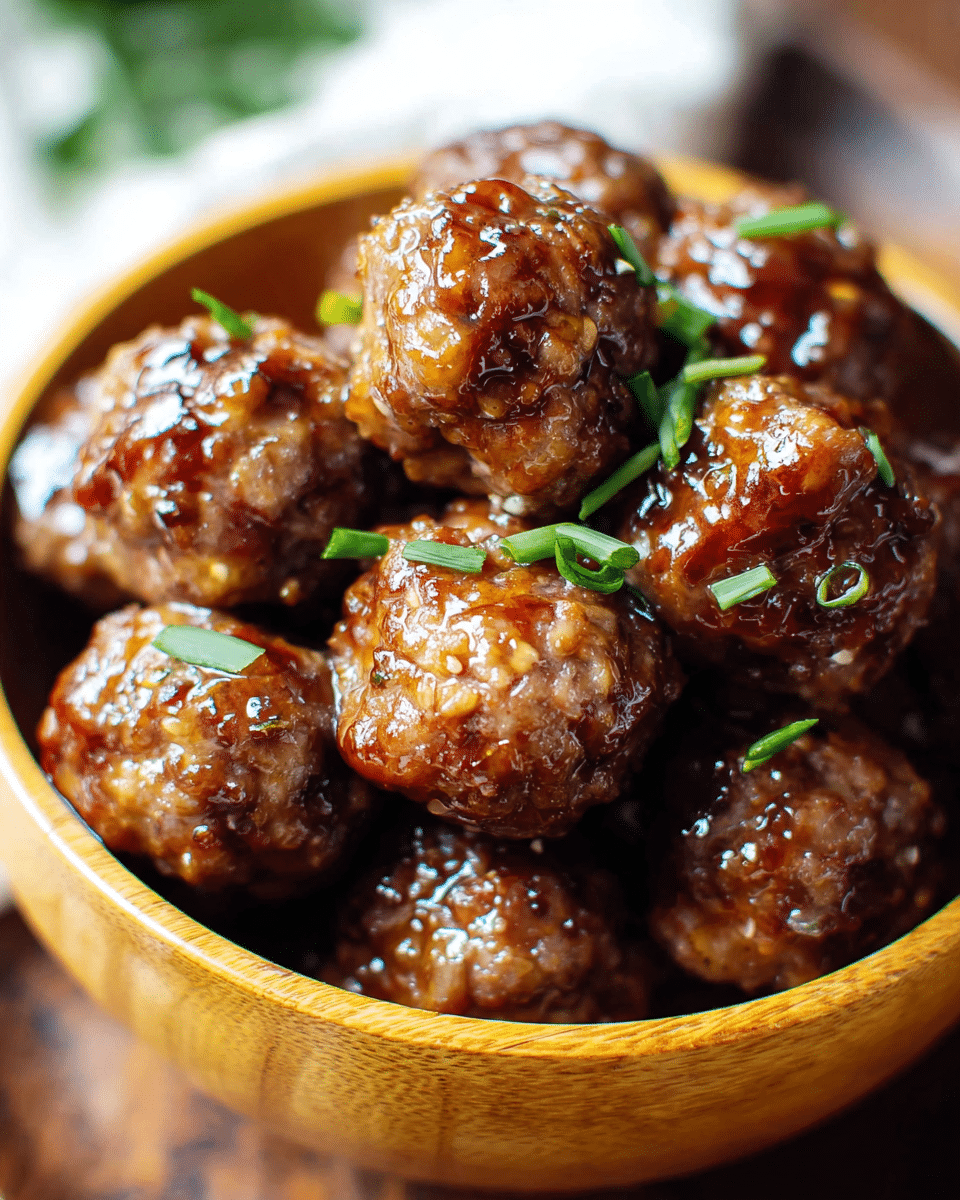Health Benefits of Asian Meatballs
Asian meatballs offer a variety of health benefits, making them an excellent choice for a balanced meal. The main protein source—whether beef, pork, or chicken—provides a good amount of essential nutrients, such as amino acids, iron, zinc, and B vitamins. Additionally, lean cuts of meat can be used to make the meatballs lower in fat, making them a healthier option compared to traditional meatball recipes that rely on fattier meats like beef or lamb.
Another significant benefit is the use of fresh vegetables and herbs in Asian meatball recipes. Green onions, garlic, and ginger, common in many variations, are known for their anti-inflammatory properties and digestive benefits. Garlic, for example, has long been recognized for its immune-boosting qualities, while ginger is often used for its ability to reduce nausea and support digestion.
Soy sauce, a key ingredient in many Asian meatball recipes, can also provide health benefits when used in moderation. While it’s high in sodium, using low-sodium soy sauce can help maintain the flavor without overloading the dish with salt. Soy sauce also contains antioxidants and other compounds that have been shown to support heart health.
The sesame oil used in the recipe adds a touch of healthy fat, which is good for brain function and promoting healthy skin. This ingredient is rich in polyunsaturated fats, specifically omega-6 fatty acids, and is often used in moderation for flavor rather than as the main source of fat in the dish.
Cooking Tips for Perfect Asian Meatballs
Creating the perfect Asian meatballs requires careful attention to both flavor and texture. Here are a few cooking tips to help you make delicious, juicy, and flavorful meatballs:
-
Use the right protein: While ground beef and pork are the most common options, chicken or turkey can also be used for a leaner version. The key is to select a protein that has enough fat to keep the meatballs tender and moist. If using leaner meats like turkey, you can add a little oil or coconut milk to keep the meatballs juicy.
-
Don’t overmix the meat: When combining the meat with spices and other ingredients, it’s important not to overwork the mixture. Overmixing can result in dense and tough meatballs. Instead, gently mix the ingredients just until combined to maintain a light texture.
-
Shape the meatballs evenly: To ensure even cooking, make sure the meatballs are uniformly sized. Using a spoon or your hands, roll the meat into uniform balls, about 1 inch in diameter, to ensure they cook evenly.
-
Baking vs. frying: While frying the meatballs adds a crispy texture, baking them is a healthier alternative that still results in a tender, juicy meatball. If you choose to bake them, place the meatballs on a parchment-lined baking sheet and bake them at 400°F (200°C) for about 15-20 minutes or until golden brown.
-
Flavor balancing: Asian meatballs rely on the perfect balance of salty, sweet, and savory flavors. Soy sauce, sesame oil, and honey all play an important role in achieving this. Taste the mixture before forming the meatballs to ensure the seasoning is just right. Don’t forget to adjust for salt levels, especially if you’re using low-sodium soy sauce.
-
Use fresh ginger and garlic: The bold, aromatic flavors of fresh ginger and garlic make a significant difference in the overall taste of the meatballs. Avoid using powdered ginger or garlic powder for the best results. Fresh ingredients will add complexity to the flavor.
Variations of Asian Meatballs
The versatility of Asian meatballs allows for various regional adaptations and ingredient substitutions. Here are some variations to consider if you want to add a twist to your recipe:
-
Thai-inspired meatballs: In Thailand, meatballs are often infused with herbs such as cilantro, basil, and mint. You could add a combination of these fresh herbs to the meatball mixture, along with lime zest and a splash of fish sauce for a fragrant, tangy variation. These meatballs pair wonderfully with a spicy peanut dipping sauce.
-
Korean-inspired meatballs: For a Korean twist, try incorporating gochujang (Korean chili paste) into the meatball mixture for added spice. You can also top the meatballs with a sprinkle of sesame seeds and serve them with a side of kimchi or a spicy kimchi dipping sauce.
-
Japanese tsukune meatballs: A traditional Japanese version of meatballs called “tsukune” is often made with ground chicken, flavored with soy sauce, mirin, and sake. These meatballs are typically grilled and served on skewers with a side of tare sauce (a sweet soy-based sauce) for dipping.
-
Vegan Asian meatballs: If you’re looking for a plant-based alternative, you can replace the meat with a combination of finely chopped mushrooms, tofu, or tempeh. Using panko breadcrumbs, soy sauce, and sesame oil will give the meatballs a similar texture and flavor profile. For extra crunch, try adding water chestnuts or bamboo shoots to the mixture.
Pairing Asian Meatballs with Sides
While Asian meatballs are flavorful on their own, pairing them with complementary side dishes can enhance the overall meal. Here are some great options to serve alongside your meatballs:
-
Steamed rice: A simple bowl of steamed jasmine rice or sticky rice is a perfect accompaniment to Asian meatballs. The rice absorbs the savory sauce, balancing the richness of the meatballs.
-
Vegetable stir-fry: A colorful vegetable stir-fry featuring bell peppers, snow peas, and bok choy makes a light, fresh side that complements the meatballs without overpowering them. The crunch of the vegetables also adds texture to the meal.
-
Asian slaw: A crunchy, tangy slaw made from cabbage, carrots, and green onions can add a refreshing contrast to the rich flavors of the meatballs. Toss it in a light vinaigrette made with rice vinegar, sesame oil, and a touch of honey.
-
Noodles: If you’re craving something more substantial, serve the meatballs over soba noodles or rice noodles. You can drizzle a little extra soy sauce or sesame oil on top for added flavor.
Conclusion
Asian meatballs are a delicious and versatile dish that can easily become a favorite in your kitchen. Whether you’re preparing them for a family dinner or serving them as appetizers at a gathering, these flavorful meatballs are sure to impress. By combining rich, savory ingredients like soy sauce, sesame oil, and ginger, you can create a balanced and satisfying meal. And with numerous variations and side dishes to complement them, there’s no end to the creative possibilities when it comes to Asian meatballs. So, gather your ingredients and get ready to enjoy this tasty, comforting dish!






